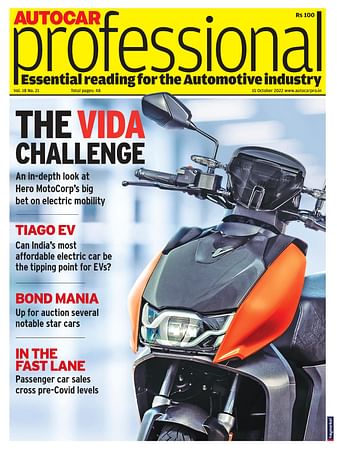Renault and Qualcomm test ‘electric road of the future’
In 10 years, electric cars could charge wirelessly from the road as they drive along it.
Technology that will allow electric cars to top up their charge on the move is being readied for production in the next decade.
The ‘electric road of the future’ could be a reality sooner, but car makers will need to design the next generation of electric vehicles (EVs) to incorporate induction charging pads into their technical make-up. Road infrastructure companies, meanwhile, will need to install multiple numbers of pads under road surfaces to make the idea a reality.
“Maybe 10 years is a good timescale for this technology,” said Virginie Maillard, a senior Renault EV engineer. “We have to design cars and the road network to accept it.”
The third-generation Renault Zoe, for example, might be expected to hit the market in the mid-2020s, and Renault has a chance to futureproof the design for induction charging.
Induction charging technology is currently being investigated at a purpose-built test track near Paris using Renault Kangoo ZE vans and Qualcomm Halo wireless induction charging equipment. Qualcomm, a huge US technology company, is better known as the designer of mobile phone chips.
Qualcomm will develop the technology and sell it as a licence to a Tier 1 supplier, which will make it a production reality. Each unit sold will earn Qualcomm a royalty.
How it works
The charging system works using the principle of induced currents – the same technique that electric toothbrush chargers deploy.
An electrically live coil is buried under the road, and when a car equipped with another coil passes over it, it induces a current in the car’s coil. This feeds into the EV’s battery and keeps it topped up.
Although the car passes over the pad buried under the road in fractions of a second, up to 20kW of energy can be pulsed into the EV, which car be travelling at speeds of up to 60mph/96kph. That’s about the same amount of energy that an EV uses when cruising.
Qualcomm’s engineers claim that enough energy can be passed to an EV to keep it moving at that speed without depleting the battery, so charge can be maintained to be used at other locations where there is no induction charging.
Ultimately, a complete road network could be equipped with induction pads, allowing EVs to travel distances unlimited by battery capacity. Research suggests that if 250 metres of every kilometre of motorway was equipped with wireless charging, an EV could travel without depleting its reserves.
The trial in France will examine all the extremes of operation, including coping with wet weather, vehicles passing over the coils out of alignment by up to 50 percent, variations in the power supply and the durability of the hardware during extended use.
Qualcomm has already programmed the wireless system to reduce the pulse of energy to 5kW when traffic is moving along the road at a stop-start pace.
Renault will also look at the integration and durability of the coils and an in-car black box, which is needed to smooth out the signal of the induced current to match the electrical system in the test vehicles.
RELATED ARTICLES
Sept 2024 From R&D incentives to EV infrastructure: What auto components industry expects from Budget 2024
Sept 2024 From R&D incentives to EV infrastructure: What auto components industry expects from Budget 2024
US car majors hit the brakes on driverless cars
Ford Motor and Volkswagen to close self-driving startup Argo AI, due to lack of technology and clear regulations.
Autoliv and Geely to develop advanced safety tech for future vehicles
Scope of cooperation includes safety for high-level autonomous driving, intelligent steering wheel technology, a 360deg ...






 20 Jul 2017
20 Jul 2017
 4227 Views
4227 Views














 Autocar Pro News Desk
Autocar Pro News Desk




